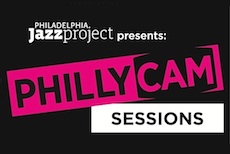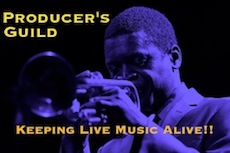Phila Songbook Concert Vol 2 Program
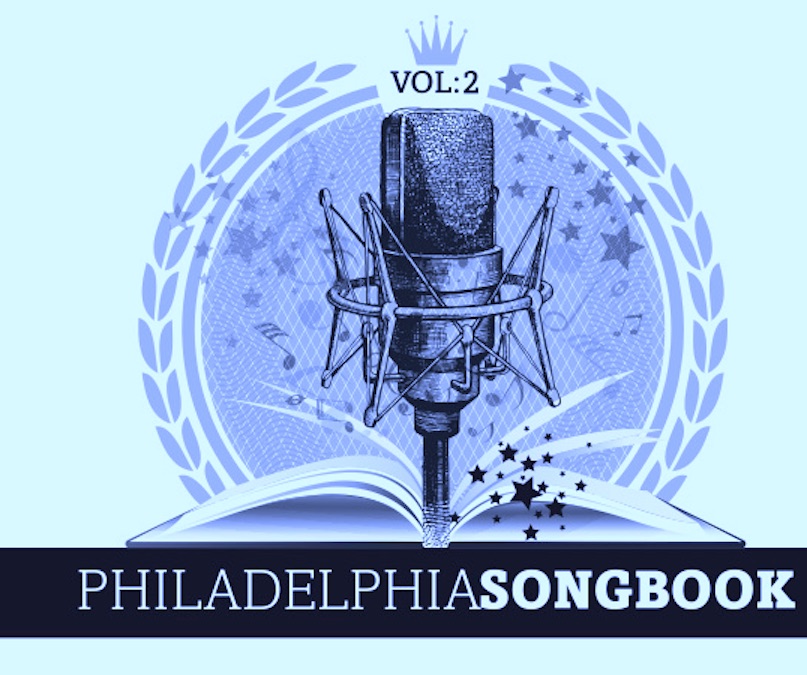
The Philadelphia Jazz Project seeks the creation of a local songbook in the tradition of the Great American Songbook, which celebrates the most important and influential American popular songs of the 20th century. The Philadelphia Songbook Concerts will include Jazz standards and popular songs penned and/or performed by local artists.
Philadelphia Songbook Concert Volume 2 will feature performances of compositions by Bobby Timmons, Dizzy Gillespie, John Legend, Alphonso Johnson, Jaco Pastorius, Terry Klinefelter, Kenny Gamble & Leon Huff, Antonio Carlos Jobim, Earl & Carl Grubbs, Music Soulchild, Hank Ballard, Gerry Mulligan and McCoy Tyner. Music Director and pianist, Terry Klinefelter and Vocal Director, Saudah Al Akbar, are joined by a team of local musicians including Byron Landham, Bob Meashey, Tim Price, Paul Klinefelter, Matthew Clayton, Ronnie Howerton, Milton Suggs, V. Shayne Frederick and more, as they take us on a fascinating musical journey.
Philadelphia Songbook Concert Volume 2
Friday, September 11, 7:30pm
American Philosophical Society
427 Chestnut Street, Phila., PA 19106
Philadelphia Songbook Vol. 2 musicians include...
Music Director/Piano/Electric Piano: Terry Klinefelter
Vocal Director/Voice: Saudah Al-Akbar
Vocalist:Tara Middleton
Vocalist: Milton Suggs
Vocalist: V. Shane Frederick
Alto Sax: Matthew Clayton
Tenor Sax/Flute/Baritone Sax: Tim Price
Trumpet: Bob Meashey
Trombone: Nick Lombardelli
Guitar/Electric Guitar: Dan Hanrahan
Double Bass: Paul Klinefelter
Bass Guitar: Christian Klinefelter
Percussion: Ron Howerton
Drums: Byron Landham
About The Songs:
Written by Sharon Chestnut;
Chestnut is a veteran of studies in philosophy, fine art, theology and organizational dynamics. She has served professionally as teacher, organizer, project consultant and strategic planning gadfly. She writes in service of her lifelong vocation to raise awareness of demonstrable processes which engender creativity, fuel intellectual acumen and encourage spiritual growth.
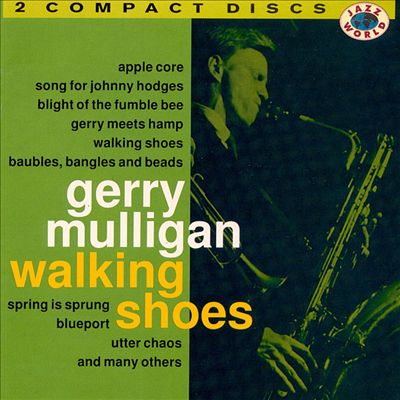 Walkin Shoes is a compostion written by baritone saxophonist, Gerry Mulligan. Though born in Queens New York Gerry Mulligan possessed a Philadelphia pedigree by way of his mother, a Philadelphia native. When Gerry was less than a year old, the family moved to Marion Ohio, where Mulligan's mother hired an African-American nanny named Lily Rose. The lady’s fondness for Gerry wrought invitations to visit, where Gerry found himself intrigued by a player piano, and Rose’s collection of rolls by accomplished players such as Fats Waller.
Walkin Shoes is a compostion written by baritone saxophonist, Gerry Mulligan. Though born in Queens New York Gerry Mulligan possessed a Philadelphia pedigree by way of his mother, a Philadelphia native. When Gerry was less than a year old, the family moved to Marion Ohio, where Mulligan's mother hired an African-American nanny named Lily Rose. The lady’s fondness for Gerry wrought invitations to visit, where Gerry found himself intrigued by a player piano, and Rose’s collection of rolls by accomplished players such as Fats Waller.
The Mulligan family moves continued with stops in Kalamazoo Michigan,and Reading, PA. Gerry soon began playing saxophone professionally in dance bands in Philadelphia. The family relocated next to Philadelphia, where Gerry attended the West Philadelphia Catholic High School for Boys and organized a school big band. He wrote arrangements for that band, as well as for the WCAU radio station house band and Tommy Tucker/Elliot Lawrence bands.
With a move to New York City in 1946 Mulligan’s arranging career took off … beginning with Gene Krupa's bebop-tinged band, the Claude Thornhill Orchestra and, then in 1948, Miles Davis formed a nine-piece band that featured arrangements by Mulligan, Evans and John Lewis. The music was eventually compiled onto a little vinyl titled Birth of the Cool. Mulligan wrote and arranged three of the tunes and he was one of only four musicians (with Davis, Konitz and Barber) who played on all the recordings.
In the spring of 1952, Mulligan headed west in search of better paying employment, where his next gig involved writing arrangements for Stan Kenton's Orchestra. While most of Mulligan's work for Kenton was designed to fill out the money-making dance performance format, he was able to include substantial original works along the way, among them his composition "Walking Shoes." This work embodies the contrapuntal style that became Mulligan's signature. He debuted a recorded version in 1953, nestled within an album of the same name. This recording featured the The Gerry Mulligan Tentette (with Chet Baker on trumpet and the Mulligan as lead baritone).
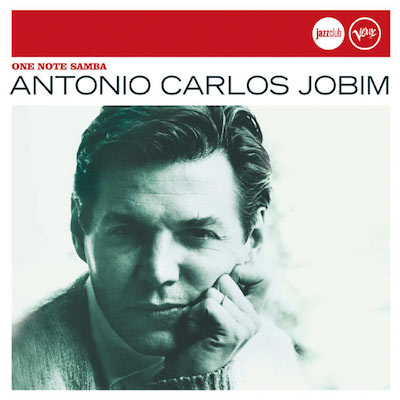 Desafinado, Dindi and Girl From Ipanema are three classic composistions written by Antonio Carlos Jobim (January 25, 1927 – December 8, 1994). Jobim was a Brazilian songwriter, composer, arranger, singer, and pianist/guitarist, and whose work was is largely responsible for exporting Brazil's bossa nova music movement globally.
Desafinado, Dindi and Girl From Ipanema are three classic composistions written by Antonio Carlos Jobim (January 25, 1927 – December 8, 1994). Jobim was a Brazilian songwriter, composer, arranger, singer, and pianist/guitarist, and whose work was is largely responsible for exporting Brazil's bossa nova music movement globally.
Jobim grew up listening to samba and other native sounds of the streets and clubs of Ipanema. Samba style music originated in the Afro-Brazilian favelas, or shanty outcropping towns, of Rio and other cities. In the thirties, radio play and records brought this music to all classes where it became very popular. Jobim added the influence of the cool jazz of American artists like Miles Davis and Gil Evans to his musical lexicon. These interests would influence his own compositions.
In 1962, the Philadelphia born artist Stan Getz and Charlie Byrd released an LP called Jazz Samba….which is credited with introducing the new Brazilian sound to U.S. audiences. However, the major breakthrough came later, when Jobim undertook a three pronged collaboration melding American jazz saxophonist Stan Getz with previous collaborators, João Gilberto and Gilberto's wife at the time, Astrud Gilberto. This resulted in two albums, Getz/Gilberto (1963) and Getz/Gilberto Vol. 2 (1964) which became one of the best-selling jazz albums of all time and birthed a global bossa nova craze. The record turned Astrud Gilberto, who sang "The Girl from Ipanema" and "Corcovado", into an international sensation. In Getz/Gilberto won Grammy Awards in the following caregories: Album of the Year, Best Jazz Instrumental Album, Individual or Group, Best Engineered Album, Non-Classical and "The Girl from Ipanema" won Record of the Year.
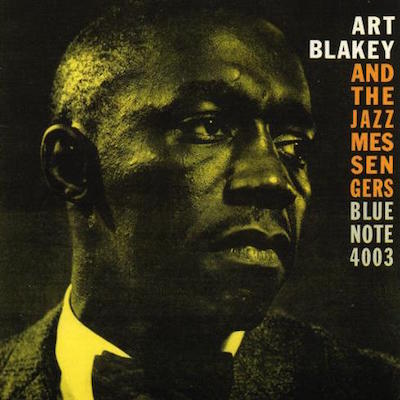 Moanin was composed by pianist and composer Robert Henry (Bobby) Timmons and first recorded as the title track of a 1958 studio album by Art Blakey and the Jazz Messenger band. Born December 19th, 1935 to a Philadelphia family, where many played piano. Bobby Timmons studied at an early age with his uncle Robert Habershaw, who also taught McCoy Tyner. Though Timmons first gigs came from his grandfather's church, he also he grew up in a South Philadelphia neighborhood which was thick with bebop during in his formative years.
Moanin was composed by pianist and composer Robert Henry (Bobby) Timmons and first recorded as the title track of a 1958 studio album by Art Blakey and the Jazz Messenger band. Born December 19th, 1935 to a Philadelphia family, where many played piano. Bobby Timmons studied at an early age with his uncle Robert Habershaw, who also taught McCoy Tyner. Though Timmons first gigs came from his grandfather's church, he also he grew up in a South Philadelphia neighborhood which was thick with bebop during in his formative years.
Fellow Jazz Messenger Benny Golson recounts that Moanin was composed almost offhandedly… As the group hit the road that year, Golson noticed that Timmons would “play this little funky lick in between the tunes.” His account continues: “When we were in Detroit, I really started to listen to it. Bobby said, ‘I said, ‘You know that little lick you play?’ ‘Yes.’ ‘You’ve got eight bars; all you need is another 8 bars on the bridge.’ He said, "Oh, that’s nothing; that’s just a little lick.” I said, ‘No, Bobby, I hear something else. Why don’t you go up on the bandstand and compose a bridge.’ In about half-an-hour he said, ‘Come and listen,’ and then he played it. I said, ‘Why don’t you try again?’ He did something, and called me over in about 15 minutes. I could see he didn’t think much of it. I said, ‘That’s it. Come on, Lee, let’s learn it. Bobby, you’ve got to give it a name now.’ He said, ‘Well, I don’t know.’ ‘Well, what does it sound like?’ He said, ‘“Well, it sounds like moaning. ’I said, ‘Good, let’s call it ‘Moanin’.”
Moanin'" was title cut of Blakey's Jazz Messengers 1958 album and has since become a jazz standard. Though the melody is a testament to Timmons' early musical environment, (taking its structure and minor key signature from the call and response hymnody of the Black church), Gary Giddons also credits the songs popularity with placement within the funky, back-to-roots fire, sometimes called Hard Bop, that Horace Silver, Charles Mingus, and Ray Charles helped in different ways, to fan.
Bobby Timmons was 24 only when Lambert, Hendricks & Ross wrote and sang lyrics onto “Moanin” and “This Here.” (tunes which debuted instrumentally in recordings by Blakey’s Jazz Messengers and Cannonball Adderley’s Quintet.) making the song even more popular. Soon thereafter, Oscar Brown’s version of Timmons' “Dat Dere,” made it onto jukeboxes around the country. On the strength of these hits, Timmons was able to cut his sideman affiliations in 1961, and accept a string of national bookings with his own trio, and record independently. Bobby Timmons died March 1st 1974. In his too short life, Timmons was one of the seminal communicators of his generation. From a distance of decades, his artistry, talent and unique perspective and “depth of being” remains palpable throughout his music.
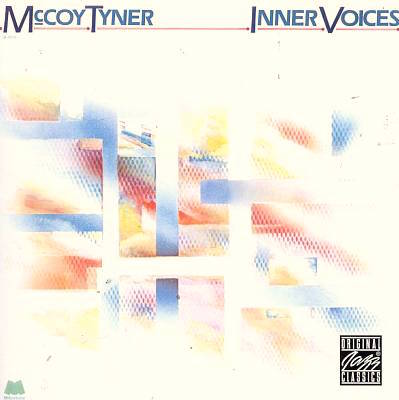 Rotunda is from Inner Voices is the twelth release from McCoy Tyner on the Milestone label. Recorded in September 1977 it features Tyners piano performances embeded in rhythm section horn section and vocalists.Tyner grew up in Philadelphia, during the period where Jazz seemed to be something you could catch from the drinking water. Encouraged by parent in his nascent love of music, he took instruction for two years before committing to life as a professional musician at age 13. By his teenage years he was already gigging locally... and had met John Coltrane. After trying his hand the Art Farmer-Benny Golson Jazztet, he left six months later to join Coltrane in what would arguably become THE quartet or the generation. Coltrane had a worthy balance in Tyner. His breathtaking keyboarding the right balance of power, style and agility to complement and challenge Coltrane's horn. Tyner more than held his own. He was never overshadowed, and kept his own creativity sharp during his Coltrane years via independent recording dates at r Impulse. During the Coltrane years (1960-1965), the pianist also led his own record dates for Impulse.
Rotunda is from Inner Voices is the twelth release from McCoy Tyner on the Milestone label. Recorded in September 1977 it features Tyners piano performances embeded in rhythm section horn section and vocalists.Tyner grew up in Philadelphia, during the period where Jazz seemed to be something you could catch from the drinking water. Encouraged by parent in his nascent love of music, he took instruction for two years before committing to life as a professional musician at age 13. By his teenage years he was already gigging locally... and had met John Coltrane. After trying his hand the Art Farmer-Benny Golson Jazztet, he left six months later to join Coltrane in what would arguably become THE quartet or the generation. Coltrane had a worthy balance in Tyner. His breathtaking keyboarding the right balance of power, style and agility to complement and challenge Coltrane's horn. Tyner more than held his own. He was never overshadowed, and kept his own creativity sharp during his Coltrane years via independent recording dates at r Impulse. During the Coltrane years (1960-1965), the pianist also led his own record dates for Impulse.
Despite the preparation, and regular opportunity for “indepent study” graduating Coltrane, required some rebalancing on Tyner's part. For a period, he led his own small groups and even worked as sideman with Ike and Tina Turner. Though public audiences of his output may have flagged, its quality did not...His recordings remained worthy and meaty even during the lean years. Tyner's work gained momentum after he signed with Milestone in 1972, and recognition of his mastery took root in the listening community. Tyner has mostly played with his own groups since the '70s, which have ranged from a quartet with Azar Lawrence and a big band to his trio. Over the years of his career Tyner become increasingly eclectic. Having established himself as a big band leader, he also cut a series of solo records, and investigated more lyrical interpretations of jazz standards. There is also no doubt that the Tyner's piano style has also changed over time tending increasingly toward evocative interpretations of standard repertoire, original composition and the Coltrane songbook.
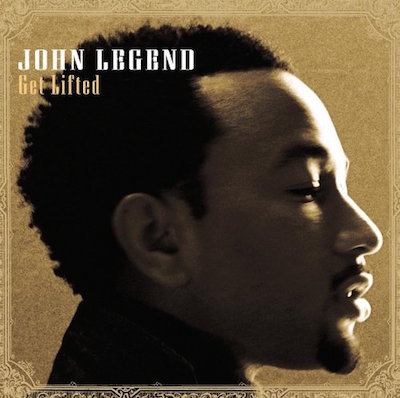 Ordinary People is a song written and produced for his debut album, Get Lifted by American recording artist John Roger Stephens (born December 28, 1978), better known by his stage name John Legend, with production assists from will.i.am, Kanye West and Dave Tozer. Ordinary People was released as the album's second single from the album Get Lifted and later certified gold by the RIAA. The song won the Grammy Award for Best Male R&B Vocal Performance.
Ordinary People is a song written and produced for his debut album, Get Lifted by American recording artist John Roger Stephens (born December 28, 1978), better known by his stage name John Legend, with production assists from will.i.am, Kanye West and Dave Tozer. Ordinary People was released as the album's second single from the album Get Lifted and later certified gold by the RIAA. The song won the Grammy Award for Best Male R&B Vocal Performance.
John Legend's Philadelphia story starts at the University of Pennsylvania, where he studied English with an emphasis on African-American literature. While at Penn, Legend served as president and musical director of co-ed acapella jazz and pop ensemble called Counterparts. He was also a member of the prestigious Sphinx Senior Society and Onyx Senior Honor Society while an undergraduate at Penn. During that time and introduction from a friend resulted in his playing piano on "Everything Is Everything", a song from Lauren Hill's breakout album The Miseducation of Lauryn Hill. Also during this period, he began holding shows around Philadelphia. By the time he finished college in 1999, he was producing, writing, and recording his own music.
After graduating University of Pennsylvania, Legend completed a demo, which he shopped to various record labels while simultaneously working as a management consultant for the Boston Consulting Group. In 2001, Devo Springsteen introduced John Roger Stephens (Legend) to then up-and-coming hip-hop artist Kanye West; who hired him to sing the hooks of West's music. After signing to West's label, a new stage name emerged from an exchange with poet J. Ivy, who had commented on Stephens "old-school sound". J. Ivy had stated, "I heard your music and it reminds me of that music from the old school. You sound like one of the legends. As a matter of fact, that's what I'm going to call you from now on! I'm going to call you John Legend." Legend has been living up to his name, already wining nine Grammy Awards, one Golden Globe, and one Academy Award. In 2007 before turning 30, Legend received the special Starlight Award from the Songwriters Hall of Fame.
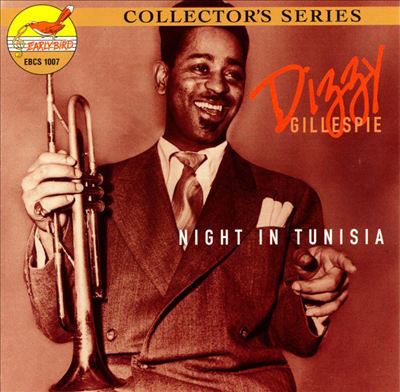 A Night in Tunisia is a musical composition written by Dizzy Gillespie during 1941-42, while he was playing with the Benny Carter Big Band. It is also known as "Interlude" under which title it was recorded by Sarah Vaughan and Anita O'Day. Gillespie himself called the tune "Interlude" and is reputed to have disparaged the renaming saying "some genius decided to call it 'Night in Tunisia." It remained one of Gillespie’s signature pieces whether under his bebop big band aegis, or with his small group work.
A Night in Tunisia is a musical composition written by Dizzy Gillespie during 1941-42, while he was playing with the Benny Carter Big Band. It is also known as "Interlude" under which title it was recorded by Sarah Vaughan and Anita O'Day. Gillespie himself called the tune "Interlude" and is reputed to have disparaged the renaming saying "some genius decided to call it 'Night in Tunisia." It remained one of Gillespie’s signature pieces whether under his bebop big band aegis, or with his small group work.
Gillespie has officially said the tune was composed at the piano at Kelly's Stables in New York. Strangely, Art Blakey counts its writing differently in on the live album A Night at Birdland Vol.1. His introduces his performance with this statement: "At this time we'd like to play a tune [that] was written by the famous Dizzy Gillespie. I feel rather close to this tune because I was right there when he composed it in Texas on the bottom of a garbage can." The audience laughs, but Blakey responds, "Seriously." The liner notes say, "The Texas Department of Sanitation can take a low bow. It bears saying that at last counting “Night in Tunisia” is universally hailed as a classic and jazz standard. At last count, it has appeared as the title track of 30 CDs and is currently included in over 500 available CDs.
Dizzy Gillespie’s impact on Jazz outstrips the space of this posting. At the very least, one should say that he was a trumpet virtuoso, who built from the style of Roy Eldrige and added complexity and layering which was previously unheard and remains hard to reproduce… Over 8 decades of musicianship, his genius touched down everywhere . Collaborations and achievements overwhelm any single account…However, it also bears noting that his iconic self styling, sporting beret, horn rimmed glasses, goatee and pouched cheeks…and engaging personality and scat singing, were essential … provided an accessible character rom which to enter the work… Dizzy as an quirky avuncular on-ramp between bebop and modern jazz accomplishments of his generation and larger mainstream audiences
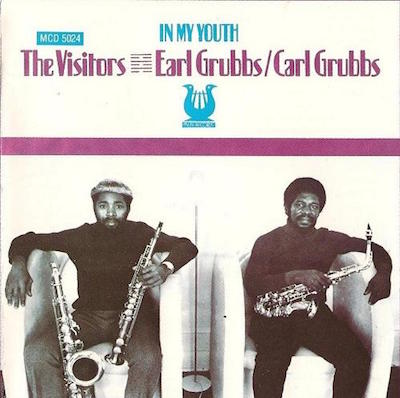 The musical composition, The Visit is believed to be written as a memory of the Grubbs Brothers [Carl and Earl], better known as The Visitors, many visits to see their cousin Naima and her world class saxophonist husband, John Coltrane in North Philadelphia. Earl Grubbs, was born in Philadelphia, July 13, 1942 and died October 6, 1989. Carl (Gordon) Grubbs born in Philadelphia, PA, July 27th 1944. Both of their parents played the piano as a hobby. Earl played blues on the piano and Lucy played piano at her church. Their parents, encouraged their musicianship and provided music lessons to both Carl and Earl at an early age. Carl received lessons on the piano at age 11 from a private tutor who came to their home for lessons. At age 13, Carl's parents purchased instruments for both sons; Earl, an alto sax and Carl, a clarinet.
The musical composition, The Visit is believed to be written as a memory of the Grubbs Brothers [Carl and Earl], better known as The Visitors, many visits to see their cousin Naima and her world class saxophonist husband, John Coltrane in North Philadelphia. Earl Grubbs, was born in Philadelphia, July 13, 1942 and died October 6, 1989. Carl (Gordon) Grubbs born in Philadelphia, PA, July 27th 1944. Both of their parents played the piano as a hobby. Earl played blues on the piano and Lucy played piano at her church. Their parents, encouraged their musicianship and provided music lessons to both Carl and Earl at an early age. Carl received lessons on the piano at age 11 from a private tutor who came to their home for lessons. At age 13, Carl's parents purchased instruments for both sons; Earl, an alto sax and Carl, a clarinet.
Both young men being saxophonists, John Coltrane had a profound impact on their playing and approach. Because of their relationship with Trane, they also developed close relationships with many of the history-making jazz musicians of the 1950’s and 1960’s like Eric Dolphy, Bill Barron, Owen Marshall. The Visit was recorded in November of 1972 for In My Youth, their second album of four to be recorded on the Muse Record label. On this set, the Grubbs Brothers were joined by other aspiring Philadelphia Jazz artists, like the remarkable Sid Simmons on piano, a young Stanley Clarke on bass and John Goldsmith on drums. Like many Coltrane tunes, The Visit is led by a strong and playful bass line, bouncing piano chords, accompanied by an Afro-Latin rhythmic bed upon which the Grubbs Brothers lay enchantingly beautiful saxophone solos. The Visitors built a strong following in the Philadelphia area and received strong radio-play and performed at Philadelphia’s most noted jazz clubs during the 1970s. The group continued performing until the untimely death of Earl Grubbs in 1989. Carl Grubbs would leave Philadelphia for Baltimore and continue his career as a composer, musician and educator.
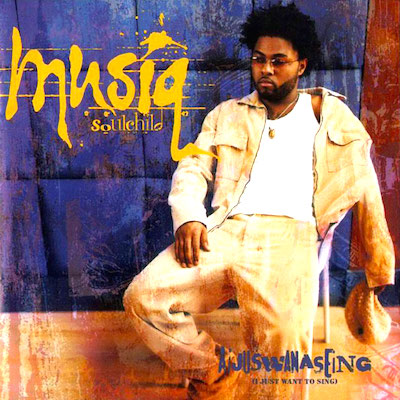 Love was written by Carvin Haggins, Andre Harris and Taalib Johnson for Musiq Soulchild’s debut album “Aijuswanasieng" in 2000. It was the second single release from the album. The song debuted on the billboard Hot R # B HipHop charts ad remained there for 48 weeks. Musiq Soulchild is the stage name for Taalib Johnson, a singer and songwriter whose style blends funk, blues jazz gospel and hiphop influences into a smoothly delivered.
Love was written by Carvin Haggins, Andre Harris and Taalib Johnson for Musiq Soulchild’s debut album “Aijuswanasieng" in 2000. It was the second single release from the album. The song debuted on the billboard Hot R # B HipHop charts ad remained there for 48 weeks. Musiq Soulchild is the stage name for Taalib Johnson, a singer and songwriter whose style blends funk, blues jazz gospel and hiphop influences into a smoothly delivered.
Taalib Jonson is the oldest of nine children born into a strict muslim household in Philadelphia,PA. He left home at an early age and dropped out of school choosing instead to build a performance reputation and hone skills freestyling the open mike circuit and performing acapella. The production team of Carvin and Ivan are widely credited with introducing Musiq Soulchild to the world and giving him a stable sound. They have participated in writing producing the majority of Musiq’s charted singles. The artist has had two gold albums which spawned 7 hit singles. Awards include Billboard, BET, ASCAP, BMI and Soul Train and 11 grammy nominations.
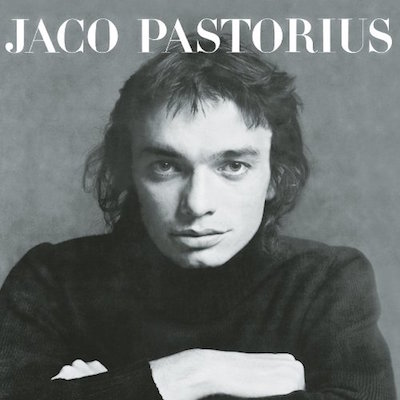 Continuum appears on his self titled debut album, Jaco Pastorius … released in 1976 and produced by Bobby Colomby (drummer Blood Sweat and Tears). On this original recording of this song features Jaco Pastorius on Bass, Don Alias-Bells, Lenny White –Drums, Alex Darqui and Herbie Hancock -Rhodes Electric Piano and contribute widely to the Jazz Fusion lexicon.
Continuum appears on his self titled debut album, Jaco Pastorius … released in 1976 and produced by Bobby Colomby (drummer Blood Sweat and Tears). On this original recording of this song features Jaco Pastorius on Bass, Don Alias-Bells, Lenny White –Drums, Alex Darqui and Herbie Hancock -Rhodes Electric Piano and contribute widely to the Jazz Fusion lexicon.
Jaco began life as John Francis Anthony Pastorius of Norristown, son of big band singer and drummer Jack. The son formed his first band named Sonic while a high school student in Florida. His first instrument was the drums, which he had to abandon due to a wrist injury sustained playing football. He became aquinted with the bass guitar in order to replace a bandmember who had recently quit. He began on a electric bass purchased for $15 at a pawn shop. By age 17, both jazz music and the rich harmonic capacities of upright bass had begun to appeal to Jaco … and he saved enough to purchase an instrument. However the Florida climate complicated and ultimately proved the upright too costy ad investment. After a seemingly endless series of upkeep challenge, his instrument simply cracked in response to wild Florida humidity. This last straw occs assioed purcase of a 1960 Fender Jazz Bass, which he eventually rendered fretless (like its acoustic counterpart) and the rest is history.
By the age of 22 Pastorius was engaged as instructor, teaching bass at University of Miami, where he met then student 18 year old Pat Metheny who was soon to transition to faculty status as well.… In 1974, the two began playing together and together with pianist Paul Bley and drummer Bruce Ditmas they recorded an album for the Improvising Artists label which would later be released as Jaco. The following year Pastorius was approached by Bobby Colomby (of Blood Sweat and Tears) who had been commissioned to find “new talent” for Colombia Records Jazz division. The result was Pastorius self-titled “first” album , produced by Colomby and released in 1976 to universal acclaim as a breakthrough in bass performance. During the same year, his professional activity included work on Weather Report recording session for the Black Market album.. during which time he established himself as vital part of the band. Ultimately the course of his musical career, and branched out to a include guest contributions and collaborations and leadership for his own projects big band..
Despite a relatively brief recording career, Pastorius left a huge body of work.. from his early recordings with Pat Metheny and writings under Weather Report, though a flurry of contributions, composings and session playing which continue transforming expectations decades after his untimely death. His solo work offers a musicianship which suggest collaborations which are no longer physically possible. His characteristic use of slide vibrado, muting to create larger harmonic intervals, and a unique singing tone confounds linear, single-note perception and manages to insinuate the presence of instruments which simply are not there. This artistry which confounded the bass playing expectations at the time of his debut album, continues drawing accolades… In addition to a number of tributes works recorded by fellow artists, his body of innovation garnered posthumous induction into the DownBeat Hall of Fame ...
Perhaps the best epilogue can be found in Herbies Hancocks quote from the cover of the self titled album
“Jaco is phenomenon. He is able to make sounds on a bass that are a total surprise to the sensibilities. Not single notes but chords, harmonics and all sorts of nuanced with the colour of the instrument that when combined and translated through Jaco make for some of the best music that I’ve heard for a long time”.
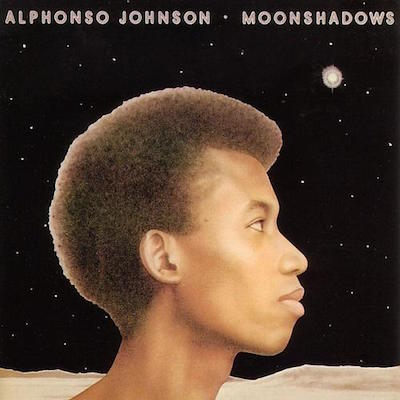 Involuntary Bliss -Alphonso Johnsosn
Involuntary Bliss -Alphonso Johnsosn
Initial recording Eddie Henderson
SUNBURST
1975
Blue Note Label
Composer Alphonso Johnson (born 1951 in Philadelphia, PA) is jazz artist who has been influential since 1970. After a short engagement with trombone, he took up the bass, starting out on upright bass and switched to the electric during teenage years (1968). Almost immediately his playing showed fluidity which was remarkable… He sat in with a variety of jazz musicians [early gigs included Horace Silver, Woody Herman (1972), Chuck Mangione (1973) and Chet Baker] before being asked to join Weather Report… substituting for co founder Miroslav Vitous. His playing was featured in songs Cucumber Slumber and Scarlet Woman from the Mysterious Travellor album (1974), and he recorded two additional WP albums before leaving to work with drummer Billy Cobham, Flora Purim and the Crusaders.
Jazz trumpetor Eddie Henderson featured Alphonso Johnsons “Involuntary Bliss” in Sunburst, his 1975 album released under the Blue Note label..… The entire collection was awarded 4 stars in a by Richard Ginel in an Allmusic review…. Who noted in Henderson “a harder earthier more structured funk driven sound while maintaining a marvelously spacier instincts for spice”
The tune was taken up less than a year later by the composer himself, in 1976 Alphonso Johnson recorded the tune for Epic records in a fusion-style album titled Moonshadow.. In addition to solo tracks laid down by himself and Chris Bond, collaborators, included Alejando Acuna (congo), Narada Michael Walden – drums, Dawilli Gonga -Electric piano, clavinet, MiniMoog and Arp String Ensemble synthesizers, Airto Moreire- Percussion, Gary Bartz- Soprano Sax, Flora Purim-Vocals. During 1976-77 he recorded three original solo albums under the Epic label….and he has been demand ever since. Moonshadow has been been re-released 3 additional times since 1988, moving from Epic to Wounded Bird Records in 2006 for its latest incarnation.
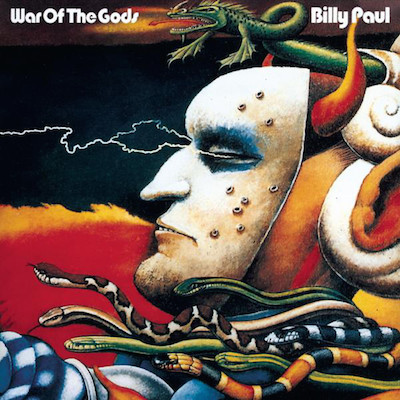 War of the Gods - Billy Paul/Leon Huff Kenny Gamble
War of the Gods - Billy Paul/Leon Huff Kenny Gamble
War of the Gods
1973
Philadelpia International Records
Billy Paul (born *Paul Williams*; December 1, 1934) is one of the many Grammy Award winner artists associated with the Philadelphia sound created by Kenny Gamble, Leon Huff , and Thom Bell . Though best known for his 1972 number-one single , "Me and Mrs. Jones " a quick biography reveals Paul’s deep roots in Jazz.
Born and raised in North Philadelphia Paul's love of music began with his family's collection of 78s. . He recalled: "That's how I really got indoctrinated into music. My mother was always...collecting records.” He began singing along and trying to emulate.
From the beginning, Paul’s styling bore the mark of Jazz interests. “All my life I wanted to sound like myself…, I always wanted to be a saxophone player.... I took my uniqueness and treated it like a horn, which created a good style for me." In becoming himself, Paul credits female jazz vocalists with showing him the way…explaining that his high vocal range posed challenges which the female singers handled well… “Put on Nina Simone , Carmen McRae or Nancy Wilson , and I'd be in seventh heaven. Female vocalists just did more with their voices, and that's why I paid more attention to them. Also, He attended the West Philadelphia Music School and the Granoff School of Music for formal vocal training which helped delivering and holding notes.
Paul began his singing career at age eleven, appearing on local radio station WPEN , then owned by the local Philadelphia Bulletin newspaper. By the time he was 16 he had I played the Club Harlem in Philly on the same bill as Charlie Parker. “He died later that year. I was there with him for a week and I learned what it would normally take two years to pick up. Bird told me if I kept struggling I'd go a long way, and I've never forgotten his words."
Paul's popularity grew and led to appearances in clubs and at college campuses. Early opportunities included concert appearances with Charlie Parker , Dinah Washington , Nina Simone , Miles Davis , The Impressions , Sammy Davis, Jr. and Roberta Flack . He also changed his name from Paul Williams to Billy Paul so as to avoid any confusion with other artists such as saxophonist and songwriter Paul "Hucklebuck" Williams . -3>
Even Paul’s 1957 induction into the Armed Services provided opportunities to perform. “I was stationed with Elvis Presley and Gary Crosby - Bing Crosby’s son. in Germany. We said we're going to start a band, so we didn’t have to do any hard work in the service. We tried to get Elvis to join but he wanted to be a jeep driver. So me and Gary Crosby , we started it and called ourselves the Jazz Blues Symphony Band. Some famous people came out of that band; Cedar Walton , Eddie Harris Don Ellis , Leo Wright , and Ron Anthony and we toured all over Germany. “
After his discharge, Paul formed a jazz trio with hard bop pianist Sam Dockery and bassist Buster Williams .
Paul and his wife and manager Blanche Williams were in the process of recording his debut album when they met Kenny Gamble. He had been singing at the Sahara on south street, around the corner from Gamble record store. I had this album, and I produced it - me and my wife. And we gave him this album called /Feelin' Good at the Cadillac Club / to help start the record company . I was singing totally Jazz then,
Paul's debut album was released in 1968 on the Gamble and Huffs Neptune label.. Largely a collection of jazz covers, it was a studio album that attempted to recreate the feel of Paul's live club performances. After Neptune folded, Gamble & Huff brought Paul along to their third label - Philadelphia International Records (PIR) – The challenge as writers and producers to find the balance between Paul's jazz roots and the funky soul that they hoped would bring mainstream success. War of the Gods was their most creatively adventurous effort .
War of the Gods " releases Paul’s more esoteric side, blending soul and funk styling with electronic and jazz fusion influences to create a properly compelling ground for compelling lyrics which bear reflection and consideration. Another famous Philadelphia musician has said as much.. Questlove of The Roots has equated Paul to Marvin Gaye and Stevie Wonder , calling him "one of the criminally unmentioned proprietors of socially conscious post-revolution '60s civil rights music
In 2012, Paul was asked how important the city of Philadelphia is to him and what the Philly sound is: "It's very very important to me. I was born here and so many great and influential artists come from here as well. Its a city of its own and has its own sound. I think what makes it different is the drama; you know how they say everyone marches to their own beat? Well I think Philly has its own beat as well, and it's distinctive. It sounds easy, but it's hard to play." Clearly "The good thing about Gamble & Huff is, nobody sounded alike, everybody had their own sound and that was the distinctive part that kept coming.
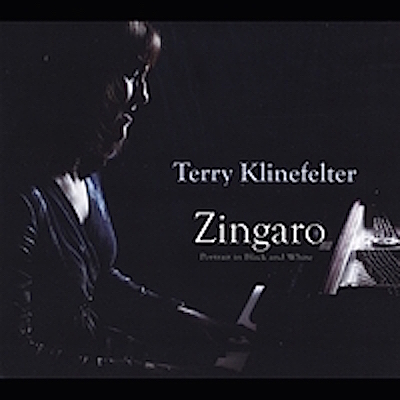 Tunnel by Terry Klinefelter
Tunnel by Terry Klinefelter
An original composition by Terry Klinefelter
Please see Terry's Bio)
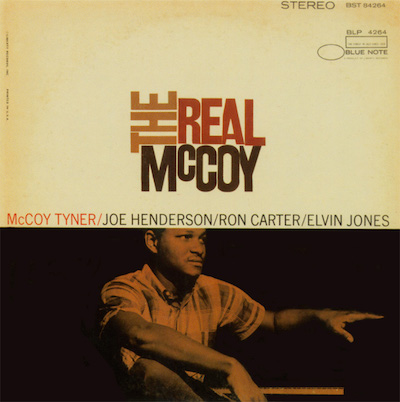 Contemplation hails from The Real McCoy, McCoy Tyner's seventh album and his first release after departing the John Coltrane Quartet. The album reflects pure session work; an uninterrupted commitment and to thematic musical exploration evidenced in evey cut. - Records like The Real McCoy and shows Tyner in his full glory as a composer... fully engaged with his own vision... equipped to create a unique to create powerful, sound motifs which are simultaneously rich vehicles for improvisation. A introspective almost contemplative side of emerges in "Contemplation" which in some ways harkens toward the style and tone personality which breaks through increasingly as Tyners career progresses. It is the sort of material that emerges for consideration in his Soliloquy album 25 years later.
Contemplation hails from The Real McCoy, McCoy Tyner's seventh album and his first release after departing the John Coltrane Quartet. The album reflects pure session work; an uninterrupted commitment and to thematic musical exploration evidenced in evey cut. - Records like The Real McCoy and shows Tyner in his full glory as a composer... fully engaged with his own vision... equipped to create a unique to create powerful, sound motifs which are simultaneously rich vehicles for improvisation. A introspective almost contemplative side of emerges in "Contemplation" which in some ways harkens toward the style and tone personality which breaks through increasingly as Tyners career progresses. It is the sort of material that emerges for consideration in his Soliloquy album 25 years later.
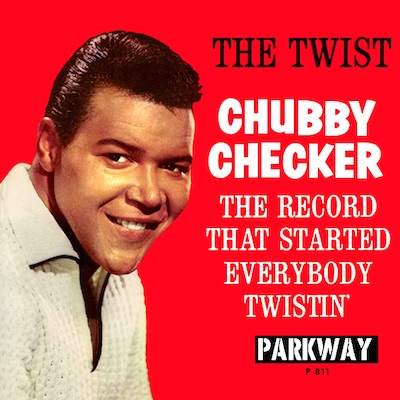 The Twist Hank Ballard/Chubby Checker
The Twist Hank Ballard/Chubby Checker
Songs about “Twisting” go way back into the early 20 century with Jelly Roll Morton’s "Winin' Boy Blues,"(1938) whose lyrics (Mama, mama, look at sis, she's out on the levee doing the double twist) referenced both sex and dancing.
However, the particular Twist which has kept hips swiveling since the 1960s, takes it start from Hank Ballard's Midnighters. Though credited to Hank Ballard, Midnighters member and guitarist Cal Green claim they “ picked up the general idea” from Brother Joe Wallace of the gospel group The Sensational Nightingales, because Bro Joe’s image prevented him from recording the song himself. Many years later, in an interview with Tom Meros that is currently available online, Midnighters' member Lawson Smith recalled the authorship of "The Twist" differently, claiming that The Sensational Nightingales' Nathaniel Bills wrote the song instead. Green and Ballard already had written a song together called "Is Your Love For Real," based on Clyde McPhatter and The Drifters' 1955 song "What'cha Gonna Do," creating” an entirely new song by simply putting the new Twist words to the older melody. In 1958 they recorded a version with slightly different lyrics in the Florida studio of Vee-Jay Records. This version (featuring Green on guitar playing like Jimmy Reed) appeared 1993 within the box set "The Vee-Jay Story", but it went unreleased at the time. Ballard did not get around to recording the better known version until November 11, 1958, when the Midnighters were in Cincinnati. Ballard thought "The Twist" was the hit side, but King Records producer Henry Glover preferred to feature "Teardrops on Your Letter," a ballad which he'd written himself. Ballard's version was a moderate 1960 hit, peaking at number 28 on the Billboard Hot 100
Clearly the “King of Twist” title remains with Philadelphian Chubby Checker, whose 1960 single cover version parted the waters, reaching number 1 on the Billboard Hot 100 on September 19, 1960 where it stayed for one week. It went on to set a record as the only song to reach number 1 in two different chart runs when it resurfaced and topped the chart again for two weeks starting on January 13, 1962. With the help of Checkers performance, the single gave birth to the Twist dance craze.
The story goes that Ballard’s song had become popular on a Baltimore TV television dance show and its host (Buddy Dean) had recommended it to Philadelphia-based National TV Emcee Impresario Dick Clark..
When the song proved popular with his audience, Clark attempted to book Ballard for his live American Bandstand show. When Ballard proved unavailable, and Clark searched for a local Philadelphia artist to record the song. He settled on Checker, whose voice resembled Ballard's. Checker's version for Parkway Records featured Buddy Savitt on sax, Ellis Tollin on drums and backing vocals by the Dreamlovers.
In July 1960, Checker performed "The Twist" live for the first time at the Rainbow Club in Wildwood, NJ and just weeks later, on Aug. 6, 1960 the song became a national sensation after Checker performed it on Dick Clark's American Bandstand. Exposure from American Bandstand and The Dick Clark Saturday Night Show helped propel the single to the top of the American charts. In 2014, Billboard magazine declared Chubby Checker’s “Twist” the biggest hit of the 1960s.
Philadelphia Jazz Project is a sponsored project of Cultureworks: Greater Philadelphia, with funding provided by The Wyncote Foundation.









